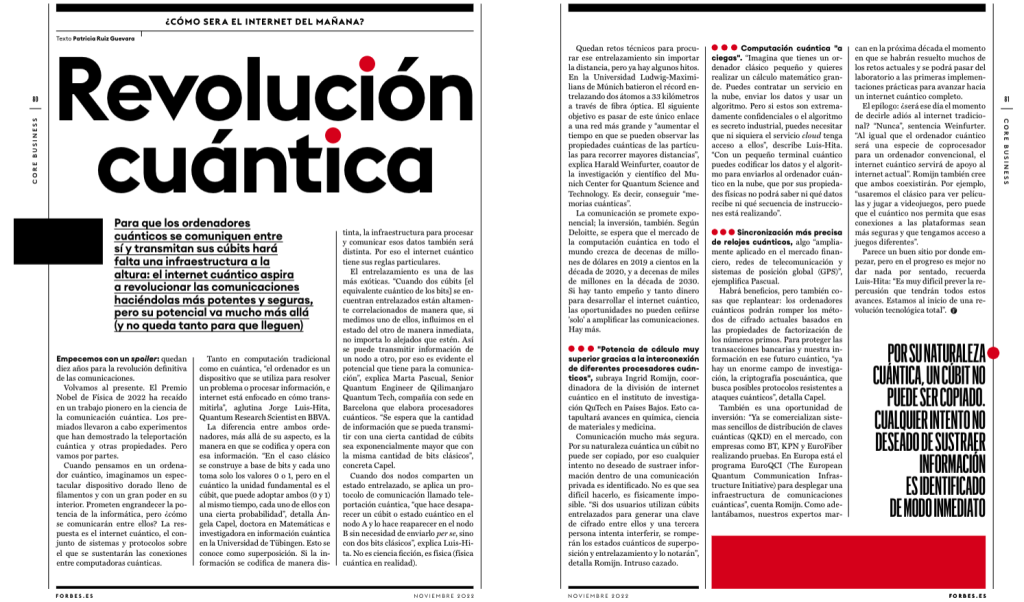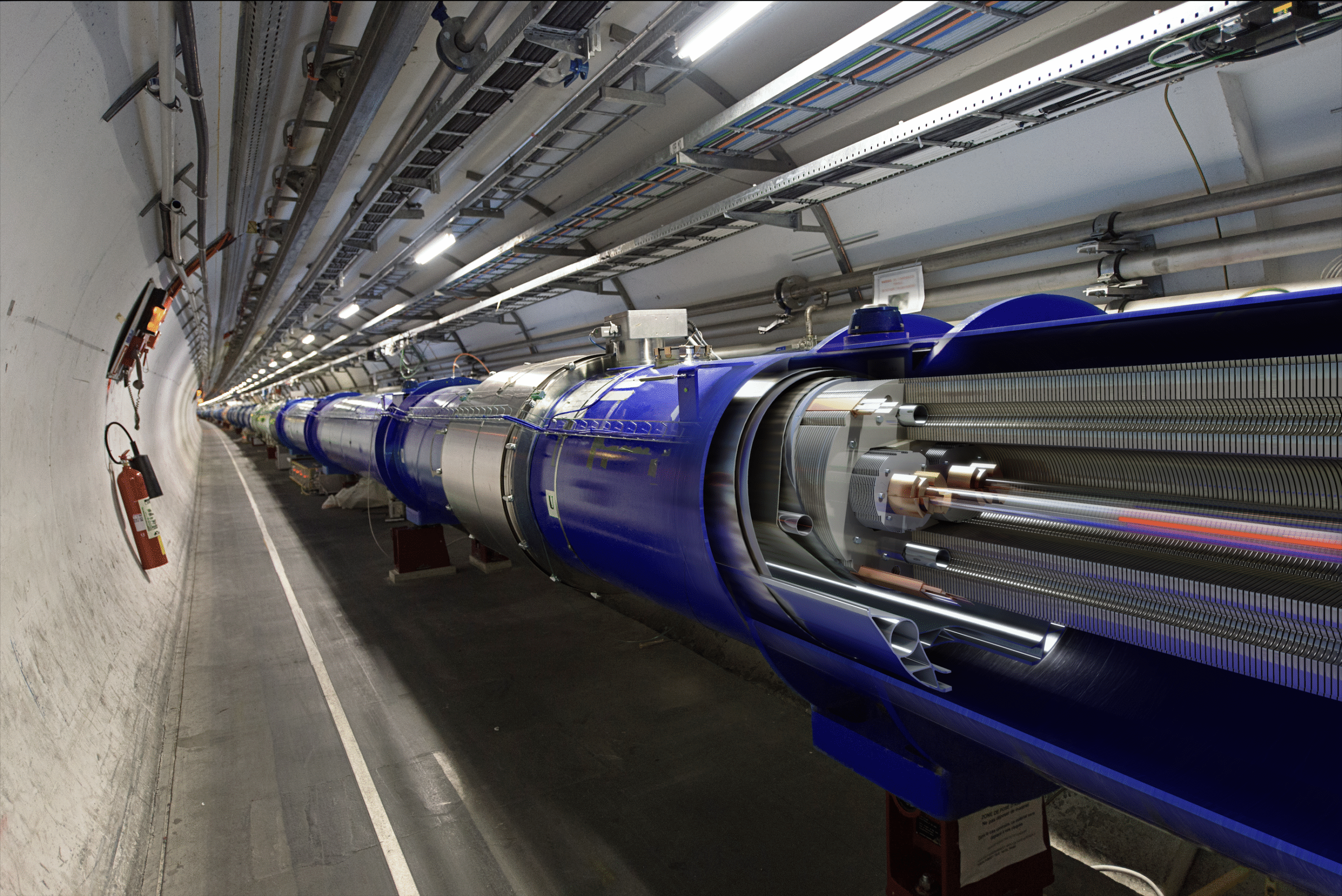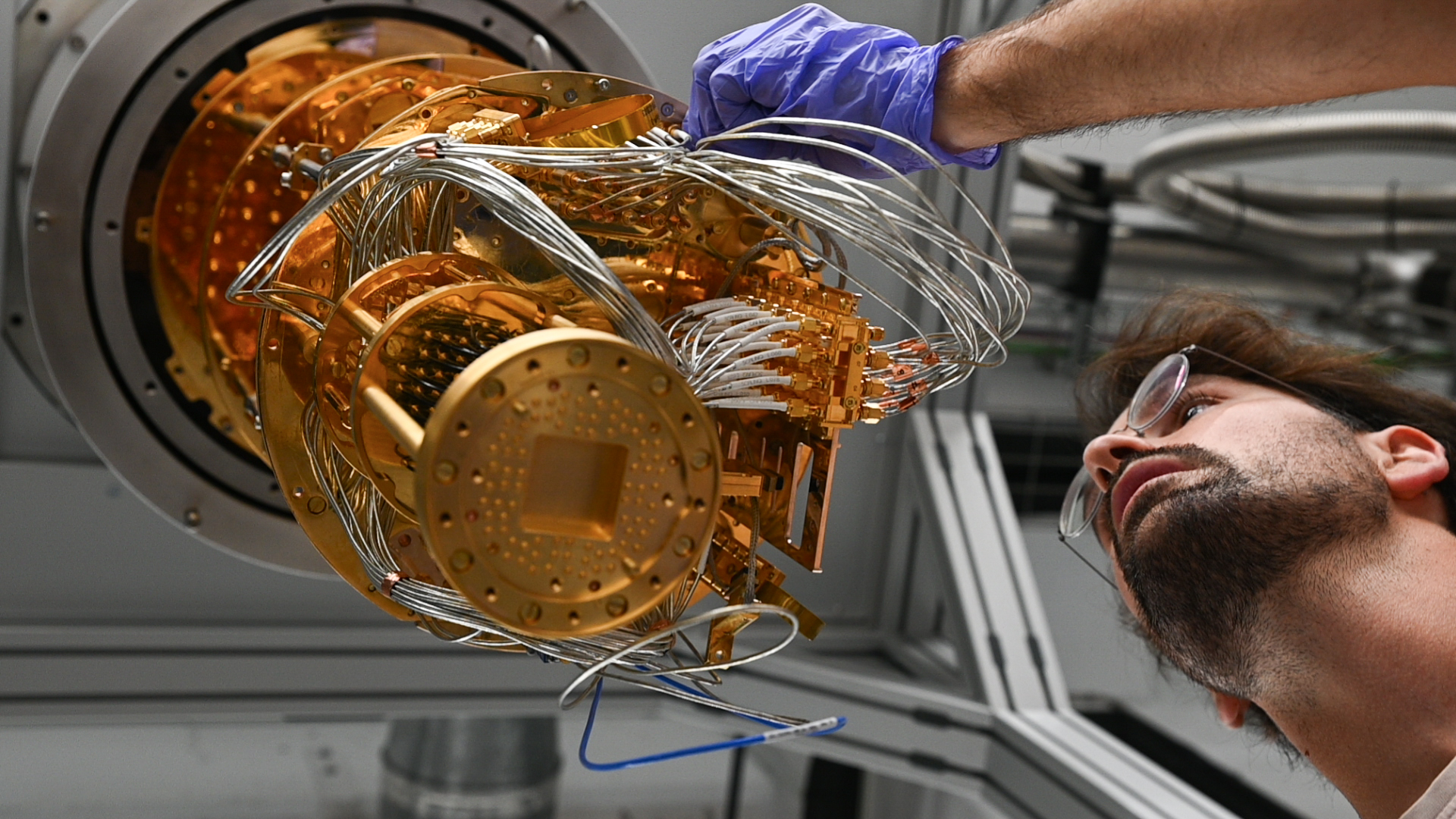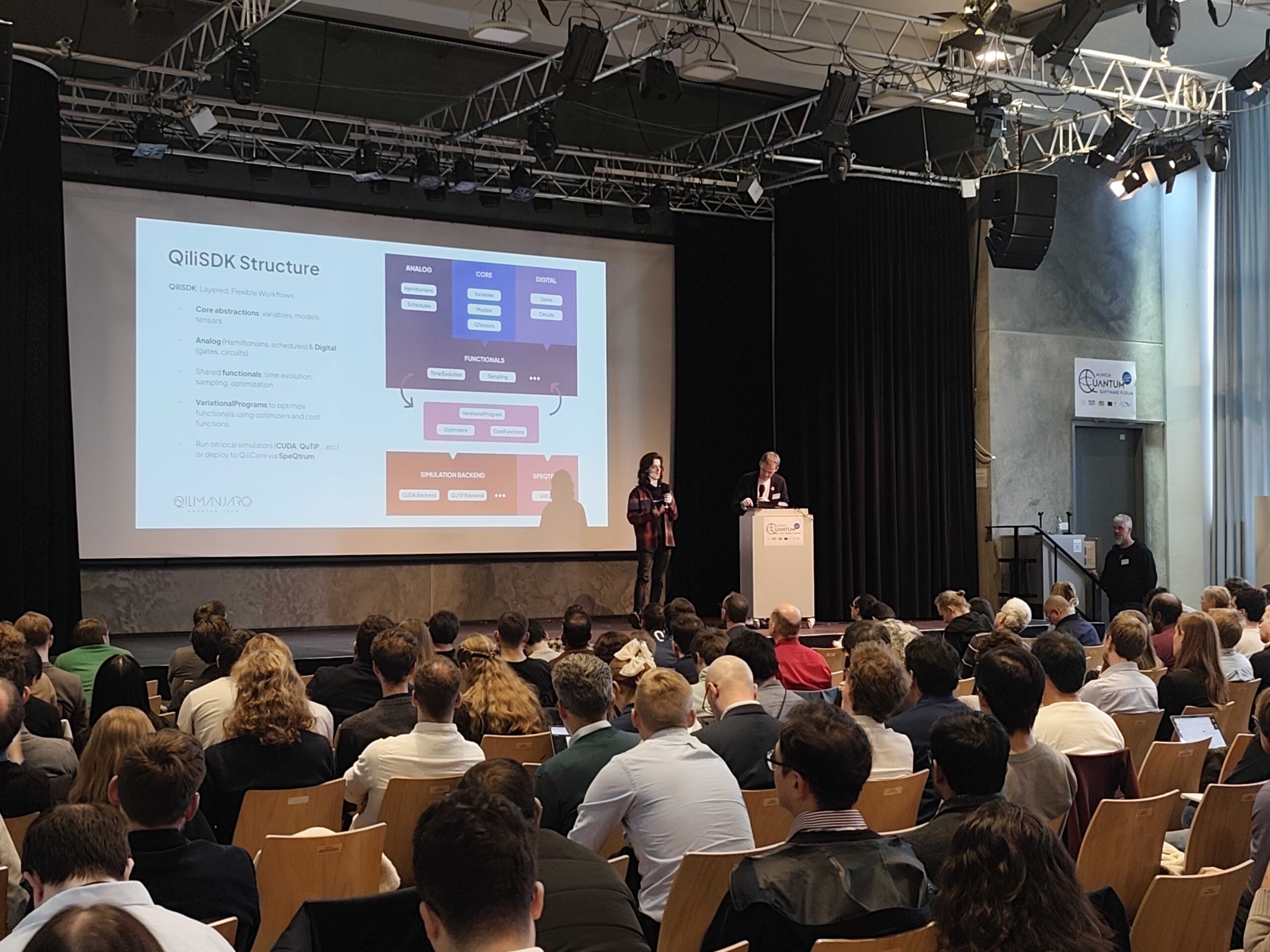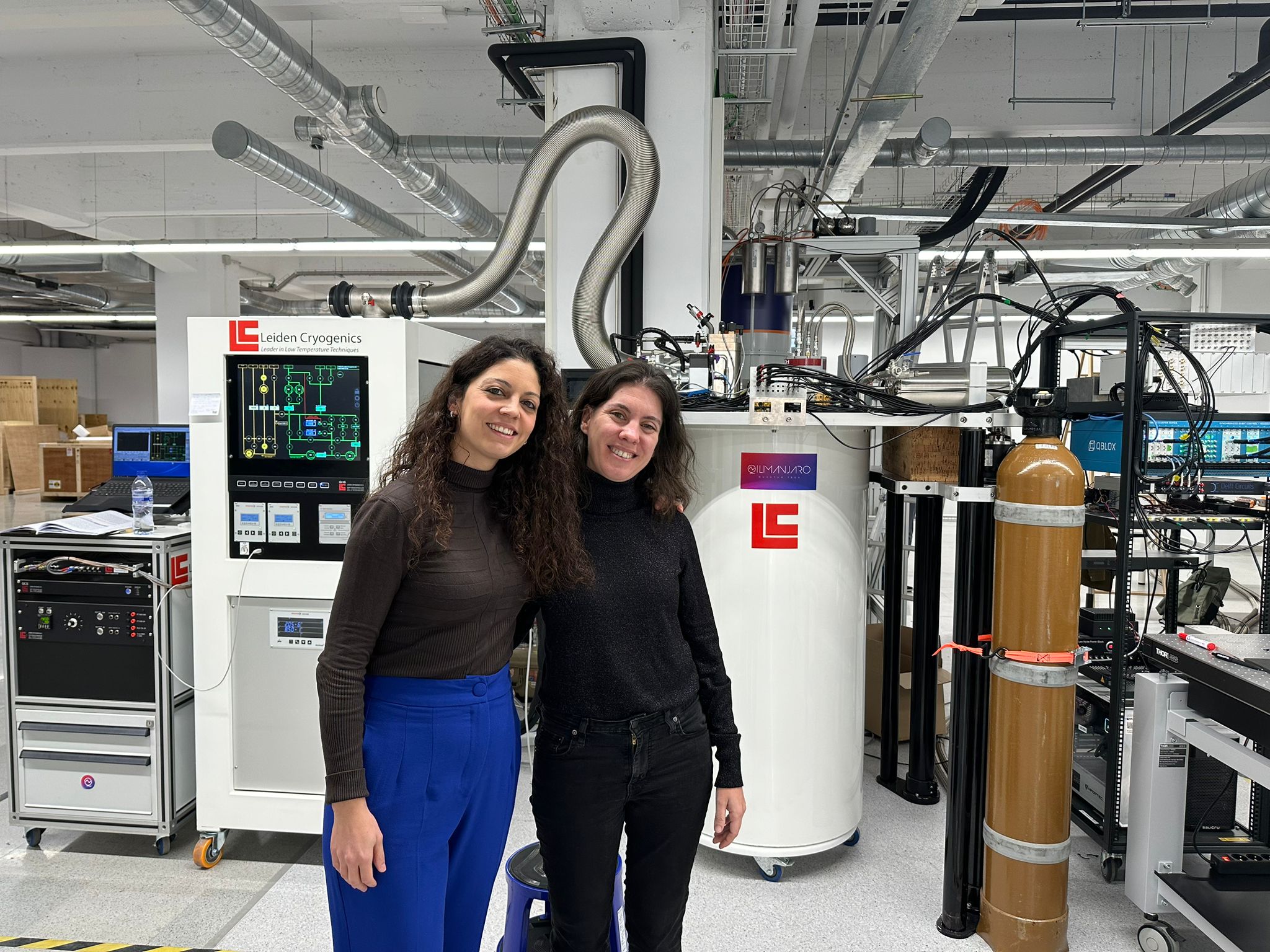The Forbes article “Revolución cuántica – Quantum revolution”, which features Marta P. Estarellas, senior quantum engineer and leader of the Theory and Applications team at Qilimanjaro, introduces the need of a new infrastructure to support the upcoming quantum computers.
Going one step beyond the purposes of quantum computers, the article looks at how these quantum computers will actually communicate between them and the answer advanced is the “quantum internet”. The quantum computers are codifying information in a different way from classical computers, which also leads to a different infrastructure to communicate the information.
In this direction, Marta P. Estarellas points out that when two qubits are entangled, they are highly correlated and when we measure one of them we influence the other. Influencing the state of one qubit leads to a change in the other qubit as well, which means that information is transmitted from one node to another, demonstrating the potential for communication.
Quantum physics is bringing these new advancements and now we are at a point when the scientists are looking to move from one link between qubits to a larger network of qubits and increase the “quantum memory”, as noted by Harald Weinfurder from Munich Center for Quantum Science and Technology.
In addition to the most well-known benefits of quantum computation: higher computational performance than classical computers, more secure connections, more precise synchronization, the article touches upon the downsides also. One of these areas is post-quantum cryptography, which is looking for possible protocols resistant to quantum attacks that could easily decipher present protocols.
In the end, the article leaves the debate open about if the new quantum internet will replace or give support and strengthen the actual internet as we know it.
Interesting reflections on the quantum computing upcoming technological and also financial changes and opportunities.
